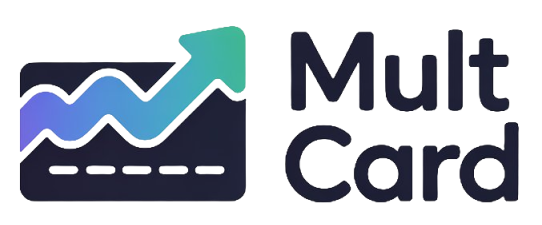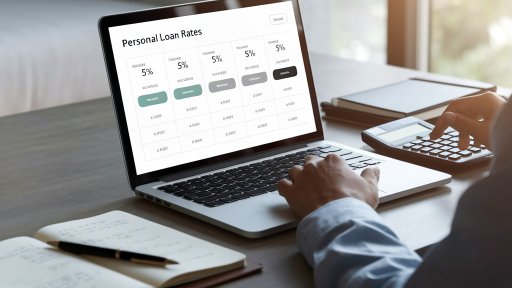Navigating the world of finance can sometimes feel overwhelming, especially when you need access to funds for a major purchase, debt consolidation, or an unexpected expense. A personal loan can be a powerful financial tool, offering a lump sum of cash with a fixed interest rate and a predictable monthly payment schedule, making it a popular choice for many.
This guide is designed to demystify the process and provide a clear, actionable roadmap. We will walk you through everything from assessing your financial health to understanding the fine print of a loan agreement. By the end, you’ll have the confidence and knowledge needed to secure a loan that fits your needs and financial situation.
Understanding the Fundamentals of Personal Loans
Before diving into the application process, it’s crucial to grasp the basics. A personal loan is a type of installment loan, meaning you borrow a fixed amount of money and pay it back in regular installments over a set period, known as the loan term. Unlike mortgages or auto loans, most personal loans are unsecured, which means they don’t require collateral like your house or car.
Key Personal Loan Terminology
Familiarizing yourself with these terms will help you compare offers and understand your loan agreement. Lenders often use specific jargon, and knowing what it means puts you in a position of power.
| Term | Definition |
|---|---|
| APR (Annual Percentage Rate) | The total cost of borrowing money per year, including the interest rate and any associated fees. This is the most accurate measure for comparing loan costs. |
| Loan Term | The length of time you have to repay the loan. Common terms range from 2 to 7 years. A longer term means lower monthly payments but more interest paid overall. |
| Principal | The initial amount of money you borrow from the lender, before any interest is added. |
| Origination Fee | A one-time fee some lenders charge for processing your loan application. It’s typically deducted from the loan proceeds, so you receive slightly less than the amount you borrowed. |
| Unsecured vs. Secured Loan | An unsecured loan doesn’t require collateral. A secured loan is backed by an asset (like a savings account or vehicle), which can result in a lower APR but puts your asset at risk if you default. |
Common Reasons to Get a Personal Loan
People use personal loans for a wide variety of reasons. Their flexibility is one of their main attractions. Some of the most common uses include:
- Debt Consolidation: Combining multiple high-interest debts (like credit cards) into a single loan with a lower interest rate.
- Home Improvements: Funding renovations, repairs, or upgrades to your property without taking out a home equity loan.
- Major Purchases: Covering the cost of a significant one-time expense, such as a wedding, a vacation, or new appliances.
- Medical Emergencies: Paying for unexpected medical or dental bills that aren’t covered by insurance.
- Vehicle Financing: Purchasing a car, especially if you find a better interest rate than a traditional auto loan.
Step 1: Assess Your Financial Situation
Before you even think about applying, you need a clear picture of your financial health. Lenders will scrutinize your finances to determine your creditworthiness, so it’s best to know where you stand first. This step helps you set realistic expectations and identify any areas for improvement.
Check Your Credit Score and Reports
Your credit score is one of the most significant factors in determining your eligibility and interest rate. A higher score generally leads to better loan offers. You are entitled to free copies of your credit reports from the major bureaus. Review them carefully for any errors that could be dragging down your score and dispute them if necessary.
Calculate Your Debt-to-Income (DTI) Ratio
Your DTI ratio compares your total monthly debt payments to your gross monthly income. Lenders use it to gauge your ability to manage new monthly payments. To calculate it, add up all your monthly debt payments (rent/mortgage, credit cards, other loans) and divide that by your gross monthly income. Most lenders prefer a debt-to-income (DTI) ratio below 43%, with many favoring applicants under 36%.
Determine How Much You Need and Can Afford
Be realistic about the loan amount. Borrowing more than you need will only result in higher interest payments. Use a loan calculator to estimate monthly payments for different loan amounts and terms. Make sure the payment fits comfortably within your monthly budget without straining your finances.
Step 2: Research Lenders and Compare Offers
Not all lenders are created equal. Rates, fees, and terms can vary significantly, so it’s essential to shop around. Consider different types of lenders to find the best fit for your profile.
Types of Lenders: A Comparison
Where you get your loan can impact everything from your interest rate to your customer service experience. Here’s a breakdown of the main options:
| Lender Type | Pros | Cons |
|---|---|---|
| Traditional Banks | Often offer competitive rates for existing customers with excellent credit. In-person service available. | Stricter eligibility requirements. Slower application and funding process. |
| Credit Unions | Tend to offer lower interest rates and fees. More focused on member service. | You must be a member to qualify. May have fewer technological features. |
| Online Lenders | Fast application and funding times. Often have more lenient credit requirements. | Can have higher APRs. No physical branches for in-person support. |
Prequalify to See Your Rates
Most online lenders, and many banks and credit unions, offer a prequalification process. This allows you to see potential loan offers, including interest rates and terms, with only a soft credit inquiry, which does not affect your credit score. Prequalifying with multiple lenders is the single best way to compare your options and ensure you’re getting a competitive deal.
Step 3: Gather Your Required Documents
Once you’ve chosen a lender, you’ll need to prepare your documentation for the formal application. Having everything ready beforehand will make the process much smoother and faster. While requirements vary slightly between lenders, you should be prepared to provide the following:
- Personal Identification: A government-issued ID like a driver’s license, passport, or state ID card.
- Social Security Number: To verify your identity and pull your credit history.
- Proof of Income: Recent pay stubs, W-2s, tax returns, or bank statements to verify your employment and salary.
- Proof of Address: A recent utility bill, lease agreement, or mortgage statement with your name and current address.
- Employment Information: Your employer’s name, address, and phone number.
Step 4: Formally Apply for the Loan
With your documents in hand, you are ready to submit the official application. This process is usually straightforward and can often be completed online in minutes. You will fill out a form with your personal, financial, and employment details and upload the documents you gathered.
Submitting the formal application will trigger a hard credit inquiry, which can temporarily lower your credit score by a few points. This is why it’s wise to complete all your loan shopping within a short period (usually 14-45 days), as multiple hard inquiries for the same type of loan are often treated as a single inquiry by credit scoring models.
Step 5: Review the Offer and Close the Loan
After your application is approved, the lender will present you with a final loan agreement. Do not rush this step. Read the document thoroughly to ensure the terms match what you were offered during prequalification. Pay close attention to:
- The final Annual Percentage Rate (APR).
- The total loan amount and the exact monthly payment.
- The loan term (the number of months for repayment).
- Any fees, such as origination fees or prepayment penalties.
If everything looks correct and you agree to the terms, you will sign the agreement electronically or in person. After signing, the lender will disburse the funds, often via direct deposit into your bank account. This can happen as quickly as the same or next business day with online lenders.
Final Thoughts on Responsible Borrowing
Securing a personal loan is a significant financial commitment. The key to a positive experience lies in careful planning, thorough research, and a clear understanding of your obligations. By following these steps, you can navigate the process with confidence, avoid potential pitfalls, and find a financial solution that helps you achieve your goals.
Always prioritize making your payments on time each month, as this will help build a positive credit history. For more in-depth consumer information, the federal government provides resources that explain how to get a personal loan and your rights as a borrower.






